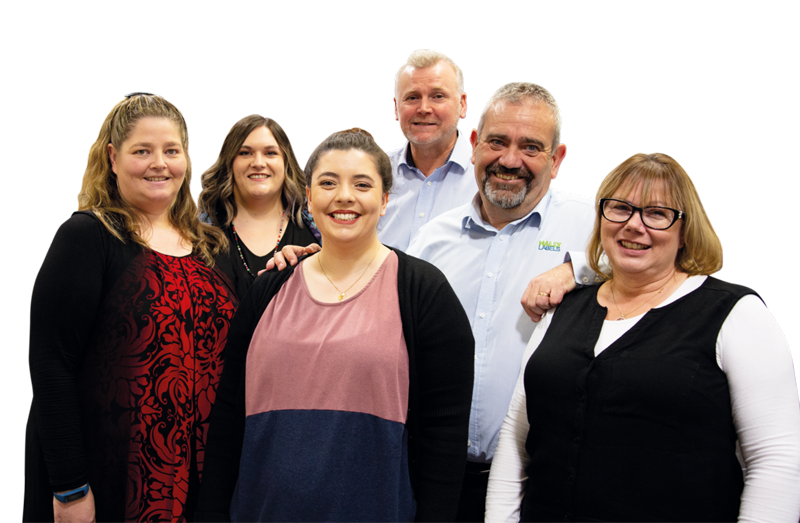
The Our Cow team was packing their chilled meat products into Cryovac bags, and then applying the labels to the bag. The bags were then vacuum sealed using a heated shrinking process during which the product was subjected to temperatures of up to 80 degrees. The meat was then chilled again for transportation.
The original labels were provided as blank paper labels, that were then overprinted by Our Cow with the individual product details. The paper material was not designed to withstand the high moisture or cold environments and as a result the labels were not fit for purpose as they risked falling off the packaging.
Bianca and Dave required a robust and durable labelling solution that would endure the changes in both temperature and environment throughout their production line. Brisbane-based Account Manager, and a regular traveller to the Northern NSW region, Manuel Rooney, showcased our Direct Thermal synthetic material that has been expertly matched with a specialist cold temperature adhesive as the ideal solution for their product.
Direct Thermal materials have a chemical layer applied to a synthetic or paper that is activated by heat. When the label is printed through a direct thermal printer, the small elements on the printer heat up and activate parts of the chemical layer to create the image required. Direct thermal material is a cost effective and simple to use labelling option. It does not require ribbons for printing and provides clear and consistent images for good readability and scannability.
We chose a synthetic direct thermal option for Our Cow. The synthetic material has been designed for labelling in chilled and frozen food sectors, where high levels of moisture and rough handling during transportation can be expected. Whereas paper labels can rip and distort in chilled conditions, the synthetic nature of this material is ideal for branded meat products as it conforms to uneven surfaces, without compromising the label design.
The direct thermal synthetic material was expertly matched with our SQR007 adhesive, which is proprietary and exclusive to MCC. This specialist cold temperature adhesive has been developed specifically for the meat industry and has also been used in a variety of cold chain labelling applications. SQR007’s unique cold temperature properties provide superior initial tack to damp and even frosted surfaces, creating a bond that delivers improved security and protection.
The labels were initially printed using our digital printing technology at our Sydney facility. Digital printing is ideal for short runs as no printing plates are required, therefore reducing preparation costs. The ink used in Digital Offset is semi-opaque, which allows for bright and vibrant colours, such as those used in the Our Cow label design.
As the quantities grew, we moved the label production to the flexographic (flexo) printing technology at our Brisbane facility. Flexo requires the use of plates for each colour that carry a raised image to accept the ink. When the plate is pressed against the material the ink transfers from the plate to the material. In most cases, once the colours have been printed, the same machine will have stations to apply coatings, add any embellishments and die-cut the labels. Our flexo presses are a fast and efficient way to achieve world-class quality for medium to long label runs.
Our in-house prepress department seamlessly managed the colour matching between the four-colour process colour digital labels and the PMS colours used to print the flexo labels. Digital uses process printing to create colours and images, typically via Cyan, Magenta, Yellow and Black or CMYK. Flexo uses a combination of spot and process colours using UV inks for the spot PMS (Pantone Matching System) colours and/or process colours required. Our flexo press technology can print up to 11 colours in one pass.
The label design included Our Cow branding on the upper half of the label. We used a gloss varnish as a spot application over this part of the label to protect the ink.


 1800 773 331
1800 773 331 0800 152 162
0800 152 162




























